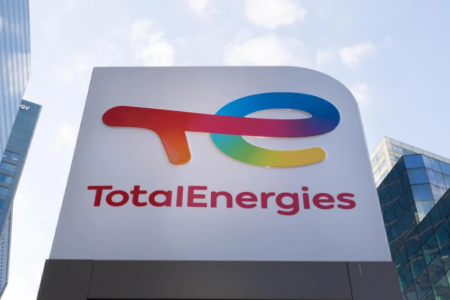Public and corporate sources of funding have focused on hydrogen, an energy source that emits no carbon emissions when used in fuel cells or burned, as global efforts to cut greenhouse gas emissions and address the effects of climate change intensify.
This carbon-free fuel has drawn interest because of its potential to be crucial in attaining complete, worldwide economic decarbonization.
On the back of the 2021 Infrastructure Investment and Jobs Act, private equity and venture firms invested over $5 billion in hydrogen-related businesses in just 2022. The legislation also provided $8 billion for the Department of Energy (DOE) to fund the development of four Regional Clean Hydrogen Hubs, or H2Hubs, across the U.S. DOE has indicated that it may use the funding to support the development of as many as ten H2Hubs, in addition to authorising $1.2 trillion in investments in infrastructure upgrades to aid the United States in its transition to a zero-carbon economy.
The hubs will be regional hubs for the production, movement, storage, and final use of hydrogen. In addition to serving as a platform and framework for operationalizing the technological and commercial advancements developed through DOE’s Hydrogen Shot programme, which aims to reduce the cost of production by 80% to $1 per kilogramme in ten years, this one-of-a-kind demonstration programme aims to catalyse domestic clean hydrogen production in the United States.
Given the significant financial commitment made by the federal government and the promise advantages hydrogen hubs may offer, it is crucial that these hubs be intelligently created and planned to optimise environmental and social advantages.
The DOE must provide funding to hubs that help the clean hydrogen production standard be met demonstrably; demonstrate clean hydrogen production, processing, delivery, storage, and final usage; and it is conceivable to create a nationwide clean hydrogen network to make it easier to produce and consume low-emission hydrogen in industries that will be hard or impossible to electrify.
DOE will assess candidates based on a number of criteria, such as:
The IIJA demands at least one H2Hub to demonstrate the generation of clean hydrogen from fossil fuels, one from renewable energy, and one from nuclear energy. Production techniques and feedstock diversification.
End-use diversity: At least one H2Hub will show how hydrogen is used in the transportation, industrial, heating, and electric power generation sectors as well as in the latter two.
Cost sharing: The hubs programme mandates a non-federal cost share of at least 50%. A non-federal source, such as a private project participant, a state or local government, or other third-party financing, must contribute to the cost share.
Community advantages Community benefits plans (CBPs) must be a part of hub applicants’ comprehensive applications to DOE in accordance with the federal Justice40 Initiative. The technical and merit examination of the proposals will give these plans a 20% weighting because they are essential components of the application. Regional hydrogen hubs that are most likely to offer citizens of the area opportunity for long-term employment and skill development will receive preference from DOE.
Leading stakeholders and regions that have responded to the DOE funding notice and intend to submit a complete proposal have been mapped and recognised by CATF in the days running up to the full application deadline on April 7. In our new map, you can further investigate state and regional application initiatives. It is historic that a hydrogen hubs initiative has been established. It denotes a considerable level of state commitment to scaling the cutting-edge industries and technology required to guarantee deep decarbonization in the ensuing decades.
The following effects are what is anticipated the programme to produce:
Decarbonization of end-use industries that are difficult to electrify: The hydrogen hubs programme has the potential to spur the decarbonization of industries like aviation, steelmaking, heavy-duty trucking, and industrial process heating, which together accounted for nearly 16% of U.S. emissions in 2018. The availability of low-carbon hydrogen would be extremely beneficial to these industries. Some of these companies, such as those that use hydrogen instead of natural gas to power their high-temperature processes, are anticipated to be firmly established within a hub. In order to refuel with low-carbon hydrogen or hydrogen derivatives, other end users like maritime shipping, heavy-duty trucking, and aircraft will travel between hubs while stopping in different parts of the United States.
Connective infrastructure and export potential: Hydrogen will frequently be delivered straight from the producer to the end-user by short pipelines for in-hub customers like industrial facilities. The spread of hydrogen will be significantly more sporadic for other end-use industries, particularly transportation. The CATF anticipates that the hydrogen hubs programme will encourage the development of ammonia and hydrogen-fueled transportation routes that connect the hubs. As a result, the growth of individual hubs will be accelerated, their economies will be strengthened, and a worldwide hydrogen network will be encouraged, possibly putting the United States in a position to export hydrogen through our ports.
Reducing expenses and encouraging investment The hydrogen hubs programme should help lower the cost of hydrogen production and create a significant incentive for project developers when combined with the hydrogen production credit from the Inflation Reduction Act (Section 45V), which grants hydrogen projects that begin construction before 2033 a tax credit of up to $3.00 per kilogramme of clean hydrogen produced based on its carbon intensity. The necessary non-federal cost share of 50% will entice private and state capital pools to invest in the hydrogen market.
Employment generation and community gains: The hubs initiative has a lot of potential to promote regional clean technology employment and workforce development possibilities. Also, the use of clean hydrogen in the transportation industry has the potential to enhance regional air quality, particularly in areas near ports and routes used by heavy-duty trucks. Also, the hubs selected will need to have effective community benefits plans due to the requirement that 40% of benefits from federal financing pass to historically underserved neighbourhoods.








